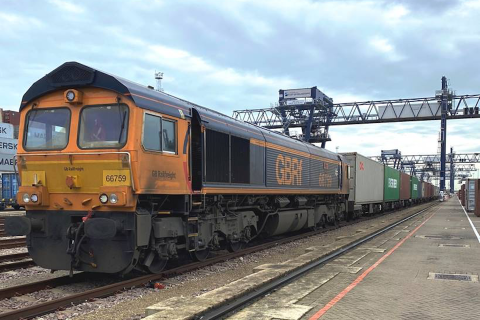Floods: long way to fully restore rail freight traffic

Following last week’s severe floods in Belgium, southern Netherlands and western Germany, rail freight in these regions has been impaired for the most part. High water levels and damages are still insisting. However, the infrastructure managers of the three countries are in a constant race to restore rail traffic where possible.
The situation remains steady concerning infrastructure problems and will not change soon. Some railway lines are gradually getting back into operation, while, in several cases, trains use diversions or do not move. In Belgium, Infrabel attempts to restart traffic line by line. At the same time, in the Netherlands, the situation is less heavy with problems insisting on cross-border connections to Belgium and specifically between Maastricht and Liege. Western Germany suffers significant infrastructure damages that also affect international rail freight traffic.
Massive impairments in Germany
North-Rhine Westphalia and Rhineland-Palatinate are the two most affected states in Germany. Deutsche Bahn has recorded substantial infrastructure problems there with “massive damage to more than 80 stations and stops, tracks over a length of more than 600 kilometres, switches, signalling technology, signal boxes, bridges and vehicles used in regional, S-Bahn and freight traffic”.
The damage assessment is still ongoing without a comprehensive overall picture in place yet. That is so because persisting high water levels, mud and debris in many locations make it impossible to approach and inspect the situation or begin repair works. Nevertheless, in areas where possible, Deutsche Bahn has already started restoring the damages, and some rail lines like that between Bonn and Koblentz will begin operating again today.

Restarting line by line
In Belgium, Infrabel has developed a plan to restore rail traffic in several lines gradually. The Montzen route, one of the routes connecting the Flemish seaports in Belgium with Germany, was opened up again for freight trains on Friday 16 July afternoon after it was closed due to flooding. Today, Monday 19 July, around nine lines will become operational again. However, this is not the case for the country’s whole rail network in the Wallonia province.
Specifically, the line restoration timeframes in the province range between one to six weeks. This means that some rail lines could become operational on 26 July or 2 August, while others could wait until 9 or even further 30 August. The disturbances due to the impairment of lines concern regional rail links and international ones since the connection between Liege and Maastricht in the Netherlands will not return until 2 August. Below you can see the timeframe for the line openings in Belgium:
- Line 40 (Liege-Maastricht)-2 August
- Line 166 (Dinant-Bertrix), part of the North Sea Mediterranean corridor-Partially on 19 July, fully on 9 August
- Line 161 (Brussels-Namen), part of the North Sea Mediterranean corridor-26 July
- Line 162 (Namen-Aarlen), a rerouting of the North Sea Mediterranean corridor-19 July
- Line 125 (Namen-Liege)-19 July
- Line 130 (Namen-Charleroi and French border), part of the North Sea Mediterranean corridor-19 July
- Line 132 (La Sambre – Treignies)-26 July

Dike breach causing problems
The situation in the southern Dutch Linburg province is no different from Belgium and Germany. Flooding in the region resulted from a hole in the Meerssen dike that allowed waters to overflow. Repair on the dike allowed rail traffic to resume between Maastricht and Sittard; however, this does not apply to traffic towards Belgium. Traffic from Eijsden to Visé in Belgium is still impaired. Moreover, no freight trains travel from the Netherlands to the Czech Republic due to floods also occurring at the latest.
ProRail, the Dutch infrastructure manager, has located damages in twelve impedance bonds in the area that need to be replaced. This process will take a whole day, but ProRail warns that the complete restoration of rail lines will have to wait until water levels recede and thorough damage assessment takes place. The following freight routes are currently functional through the Netherlands:
- Oldenzaal-Bad Bentheim
- Zevenaar-Emmerich (planned work in Germany on the 3rd track)
- Roosendaal-Essen
- Roosendaal-North Kempen
- Venlo- Kaldenkirchen
- Maastricht-Herzhogenrath (1 track available)
Also read:
- Floods in Western-Europe: these railway lines are affected
- Railway lines Belgium flooded, repair could take weeks
- Flood update – rail freight in northwest Germany paralysed
- Update: Montzen route reopens, south of Belgium remains flooded
You just read one of our premium articles free of charge
Want full access? Take advantage of our exclusive offer





